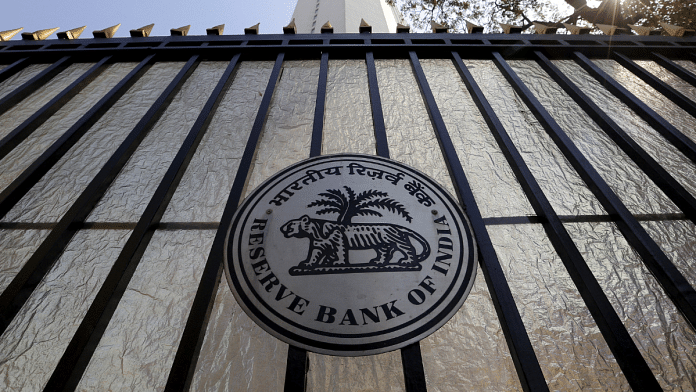Thank you dear subscribers, we are overwhelmed with your response.
Your Turn is a unique section from ThePrint featuring points of view from its subscribers. If you are a subscriber, have a point of view, please send it to us. If not, do subscribe here: https://theprint.in/subscribe/
RBI Governor stated that deposit mobilization has been lagging credit growth for some time now, which may potentially expose the system to structural liquidity issues and therefore, he flagged concerns over decline in bank deposits. He says, “While bank deposits continue to remain dominant as a percentage of financial assets owned by households, their share has been declining with households increasingly allocating their savings to mutual funds, insurance funds and pension funds.” Households are increasingly investing their savings in capital markets and other financial intermediaries.
Deposit growth of commercial banks declined to 10.64% for fortnight ending June 28, 2024, while credit increased at 13.88% year-on-year, according to the latest RBI data. In a scenario where banks are required to maintain Variable Reserve Ratios (Cash, SLR, LCR, etc.), such situation cannot arise excepting when banks do heavy borrowings from the Lender of the Last Resort (as budgetary support and external borrowings are rare/minimal, excepting capital infusion in the past for public sector banks), which money causes inflationary pressure. Besides, banks are forced to keep lending rates constant (being already higher), while paying more interest to attract deposits, thus causing Net Interest Margin pressure, affecting bank’s financial stability and growth prospects, besides causing structural liquidity risks (utilizing short term deposits for long term lending). Further, banks have diversified their operational activities to garner increased business as one-stop financial shops during the last decade, seems disturbing. They are busy counting fee-based income generated through the sale of third-party products concerning mutual funds and insurance but losing sight of their own retail (especially household) deposit portfolio. Core-banking (collecting deposits and extending loans) efforts seems diluted. Banks’ ability to collect and retain deposits has become difficult and there is a worrisome constant & widening mismatch in deposits and lending.
According to the June edition of RBI’s Financial Stability Report, India’s overall household savings declined to 18.4% of GDP in the fiscal year 2022-23 from an average of 20% during 2013-2022. The share of net financial savings in total savings fell to 28.5% in 2022-23, from an average of 39.8% during 2013-2022. Even out of these meagre financial savings, a higher chunk of the bank deposits come from Middle Income group, retired persons, and poor people. Rich people do have other alternatives to keep their savings invested in various businesses, besides substantial investment in farmhouses, residential & commercial estates, gold & diamonds jewelry. They tend to borrow more from the banking system than what they fruitfully keep with banks for a longer period.
Normally the banking system as a whole may not make vigorous efforts to mobilize public deposits. Many depositors are not risk takers and do not invest their hard-earned savings in other ventures like Stock & Commodity markets (although started recently), huge real estate, deposits with non-banking companies. Many being lethargic to even switching to better interest rate deposits in the same or other banks, post offices, etc. Hence, they have no option but to keep their savings with the banking system, which also facilitates non-cash payments. However, individual banks may have to lure depositors with a slightly higher rate of interest due to inter-se competition through “innovative and attractive” deposit schemes.
Other incentives to provide motivation to the depositors (present & future) could be:
- Non-levy of any penalty on deposit accounts for small violation like non-maintenance of minimum balances, non-operating of savings accounts for some period, charges for statements/passbook/cheque books (excepting for repeat offenders), penalty on pre-matured withdrawal of fixed deposits, etc.
- Income tax exemption on bank & post office deposits, as these deposits cross subsidize Indian economic through their multiplier effects.
- Raising the deposit insurance limit to the full extent of deposit amount, despite banks needing to pay higher insurance premium.
- Govt. may compensate adequately banking system for several types of governmental businesses and activities, wherein banks are engaged, such as collection of taxes and other service charges, participation in various developmental programs, etc.
- Govts. may resort to quick payment of bank dues, whenever payable under loan/interest waiver, or any other schemes, immediately on their filing underlying claims with respective Govt.
- Banks cannot expect their depositors to always be loyal to them with CASA deposits (interest 0% to 4%) when Fixed Deposit interests are higher (6% to 8%). Depositors do have a right to explore avenues where they can earn maximum returns on their deposits. Banks may not insist on CASA deposits.
- Banks are extraordinarily pursuing and pushing their own customers into purchase of third-party financial products. Customers use their bank deposits to stay invested in these financial products (capital market or insurance). So, if drought on deposits is to be arrested, banks have to rethink the policy matters governing their sale of third-party products
These pieces are being published as they have been received – they have not been edited/fact-checked by ThePrint


